Gima KD-5923 Andon Handleiding
Gima
Bloeddrukmeter
KD-5923 Andon
Bekijk gratis de handleiding van Gima KD-5923 Andon (2 pagina’s), behorend tot de categorie Bloeddrukmeter. Deze gids werd als nuttig beoordeeld door 36 mensen en kreeg gemiddeld 4.6 sterren uit 18.5 reviews. Heb je een vraag over Gima KD-5923 Andon of wil je andere gebruikers van dit product iets vragen? Stel een vraag
Pagina 1/2

Note:
2.1 The clock format could be set by user.
2.2 Table 1 instructs the conversion relations between 24 hour format and 12
hour format.
Table 1
3. Connecting the cuff to the monitor
Insert the cuff tubing connector into the socket in the left side of the monitor.
Make certain that the connector is completely inserted to avoid air leakage dur-
ing blood pressure measurements.
your arm. You should be able to insert one nger between your arm and the
cuff.
Note:
• Please refer to the cuff circumference range in “SPECIFICATIONS” to make
sure that the appropriate cuff is used.
• Measure on the same arm each time.
• Do not move your arm, body, or the monitor and do not move the rubber tube
during measurement.
• Stay quiet, calm for 5 minutes before blood pressure measurement.
• Please keep the cuff clean. If the cuff becomes dirty, remove it from the mon-
itor and clear it by hand in a mild detergent, then rinse it thoroughly in cold
water. Never dry the cuff in clothes dryer or iron it. Clean the cuff after the
usage of every 200 times is recommended.
• Do not place the cuff around your arm if the arm has any inammation, acute
diseases, infections skin wounds.
5. Body posture during measurement
Sitting Comfortably Measurement
a. Be seated with your feet at on the oor, and don’t
cross your legs.
b. Place palm upside in front of you on a at surface
such as a desk or table.
IMPORTANT INFORMATION .............................................................................3
CONTENTS AND DISPLAY INDICATORS .........................................................4
INTENDED USE .................................................................................................5
PACKAGE CONTENTS .....................................................................................5
CONTRAINDICATION ........................................................................................5
PRODUCT DESCRIPTION.................................................................................6
SPECIFICATIONS ..............................................................................................7
NOTICE .............................................................................................................8
SETUP AND OPERATING PROCEDURES ......................................................12
1. Battery loading ............................................................................................12
2. Clock and date adjustment .........................................................................13
3. Connecting the cuff to the monitor .............................................................15
4. Applying the cuff .........................................................................................16
5. Body posture during measurement .............................................................17
6. Taking your blood pressure reading ............................................................18
7. Displaying stored results .............................................................................19
8. Deleting measurements from the memory ..................................................21
9. Assessing high blood pressure for adults ...................................................22
10. Technical alarm description .......................................................................23
11. Troubleshooting (1) ....................................................................................24
12. Troubleshooting (2) ....................................................................................25
MAINTENANCE ...............................................................................................26
EXPLANATION OF SYMBOLS ON UNIT .........................................................28
ELECTROMAGNETIC COMPATIBILITY INFORMATION .................................30
WARRANTY INFORMATION ...........................................................................33
IMPORTANT INFORMATION
Normal blood pressure uctuation
All physical activity, excitement, stress, eating, drinking, smoking, body posture
and many other activities or factors (including taking a blood pressure measure-
ment) will inuence blood pressure value. Because of this, it is mostly unusual to
obtain identical multiple blood pressure readings.
Blood pressure uctuates continually day and night. The highest value usually
appears in the daytime and lowest one usually at midnight. Typically, the value
begins to increase at around 3:00AM, and reaches to highest level in the daytime
while most people are awake and active.
Considering the above information, it is recommended that you measure your
blood pressure at approximately the same time each day.
Too frequent measurements may cause injury due to blood ow interference,
please always relax a minimum moment of 1 to 1.5 minutes between measure-
ments to allow the blood circulation in your arm to recover. It is rare that you
obtain identical blood pressure readings each time.
7. Consult your physician if you have any doubt about below cases:
1) The application of the cuff over a wound or inammation diseases;
2) The application of the cuff on any limb where intravascular access or ther-
apy, or an arterio-venous (A-V) shunt, is present;
3) The application of the cuff on the arm on the side of a mastectomy or
lymph node clearance;
4) Simultaneously used with other monitoring medical equipments on the
same limb;
5) Need to check the blood circulation of the user.
8. This Electronic Sphygmomanometers is designed for adults and
should never be used on infants or young children. Consult your phy-
sician or other health care professionals before use on older children.
9. Do not use this unit in a moving vehicle, This may result in erroneous
measurement.
10. Blood pressure measurements determined by this monitor are equivalent to
those obtained by a trained observer using the cuff/stethoscope auscultation
method, within the limits prescribed by the American National Standard Insti-
tute, Electronic or automated sphygmomanometers.
11. Information regarding potential electromagnetic or other interference be-
tween the blood pressure monitor and other devices together with advice re-
garding avoidance of such interference please see part ELECTROMAGNET-
IC COMPATIBILITY INFORMATION. It is suggested that the blood pressure
monitor be kept at least 30 cm away from other wireless devices, such as
WLAN unit, microwave oven, etc.It can’t be used near active HF SURGICAL
EQUIPMENT and the RF shielded room of an ME SYSTEM for magneticres-
onance imaging, where the intensity of EM DISTURBANCES is high.
12. If Irregular Heartbeat (IHB) brought by common arrhythmias is detected in
the procedure of blood pressure measurement, a signal of will be dis-
played. Under this condition, the Electronic Sphygmomanometer can keep
function, but the results may not be accurate, it’s suggested that you consult
with your physician for accurate assessment.
There are 2 conditions under which the signal of IHB will be displayed:
1) The coefcient of variation (CV) of pulse period >25%.
2) The difference of adjacent pulse period≥0.14s, and the number of such
pulse takes more than 53 percentage of the total number of pulse.
13. Please do not use the cuff other than supplied by the manufacturer, other-
wise it may bring biocompatible hazard and might result in
measurement error.
14. The monitor might not meet its performance specications or cause
safety hazard if stored or used outside the specied temperature and
humidity ranges in specications.
15. Please do not share the cuff with other infective person to avoid
cross-infection.
16. This equipment has been tested and found to comply with the limits for a
Class B digital device, pursuant to part 15 of the FCC Rules. These limits
are designed to provide reasonable protection against harmful interference
in a residential installation. This equipment generates, uses and can radiate
CONTENTS AND DISPLAY INDICATORS
Note: The pictures in the manual are for reference only.
INTENDED USE
Fully Automatic Electronic Blood Pressure Monitor is for use by medical profes-
sionals or at home and is a non-invasive blood pressure measurement system
intended to measure the diastolic and systolic blood pressures and pulse rate of
an adult individual by using a non-invasive technique in which an inatable cuff is
wrapped around the upper arm. The cuff circumference is limited to 22cm-48cm
(approx. 8-18.2”).
PACKAGE CONTENTS
1 Blood Pressure Monitor
1 Operation Guide
1 Arm cuff 22-30cm (8-11’’)
1 Soft Storage Case
CONTRAINDICATION
It is inappropriate for people with serious arrhythmia to use this Electronic
Sphygmomanometer.
radio frequency energy and, if not installed and used in accordance with
the instructions, may cause harmful interference to radio communications.
However, there is no guarantee that interference will not occur in a particular
installation. If this equipment does cause harmful interference to radio or tel-
evision reception, which can be determined by turning the equipment off and
on, the user is encouraged to try to correct the interference by one or more
of the following measures:
- Reorient or relocate the receiving antenna.
- Increase the separation between the equipment and receiver.
- Connect the equipment into an outlet on a circuit different from that to
which the receiver is connected.
- Consult the dealer or an experienced radio/TV technician for help.
17. Measurements are not possible in patients with a high frequency of arrhyth-
mias.
18. The device is not intended for use on neonates, children or pregnant women.
(Clinical testing has not been conducted on neonates, children or pregnant
women.)
19. Motion, trembling, shivering may affect the measurement reading.
20. The device would not apply to the patients with poor peripheral circulation,
noticeably low blood pressure, or low body temperature (there will be low
blood ow to the measurement position).
21. The device would not apply to the patients who use an articial heart and
lung (there will be no pulse).
22. Consult your physician before using the device for any of the following con-
ditions: common arrhythmias such as atrial or ventricular premature beats or
atrial brillation, arterial sclerosis, poor perfusion, diabetes, pre-eclampsia,
renal diseases.
23. The patient is an intended operator.
24. Attention that changes or modication not expressly approved by the party
responsible for compliance could void the user’s authority to operate the
equipment.
25. Swallowing batteries and/or battery uid can be extremely dangerous. Keep
the batteries and the unit out of the reach of children and disabled persons.
26. If you are allergic to plastic/rubber, please don’t use this device.
SETUP AND OPERATING PROCEDURES
1. Battery loading
a. Open battery cover at the back of the monitor.
b. Load four “AAA” size batteries. Please pay attention to polarity.
c. Close the battery cover.
When LCD shows battery symbol , replace all batteries with new ones.
Rechargeable batteries are not suitable for this monitor.
Remove the batteries if the monitor will not be used for a month or more to avoid
relevant damage of battery leakage.
PRODUCT DESCRIPTION
Based on Oscillometric methodology and silicon integrated pressure sensor,
blood pressure and pulse rate can be measured automatically and non-invasive-
ly. The LCD display will show blood pressure and pulse rate. The most recent
4x30 measurements can be stored in the memory with date and time stamp.
The Electronic Sphygmomanometer corresponds to the below standards: IEC
60601-1Edition 3.1 2012-08/EN 60601-1:2006/A1:2013 (Medical electrical
equipment -- Part 1: General requirements for basic safety and essential perfor-
mance), IEC60601-1-2:2014/EN 60601-1-2:2015(Medical electrical equipment
-- Part 1-2: General requirements for basic safety and essential performance
- Collateral standard: Electromagnetic compatibility - Requirements and tests),
IEC80601-2-30:2009+AMD1:2013/EN IEC80601-2-30:2019 (Medical electrical
equipment –Part 2-30: Particular requirements for the basic safety and essential
performance of automated non-invasive sphygmomanometers)EN 1060-1: 1995
+ A2: 2009 (Non-invasive sphygmomanometers - Part 1: General requirements),
EN 1060-3: 1997 + A2: 2009 (Non-invasive sphygmomanometers - Part 3: Sup-
plementary requirements for electro-mechanical blood pressure measuring sys-
tems); ISO81060-2:2013(Non-Invasive Sphygmomanometers - Part 2: Clinical
Validation Of Automated Measurement Type).
13. Environmental humidity for operation: ≤85% RH
14. Environmental temperature for storage and transport:
-20°C~50°C (-4°F~122°F)
15. Environmental humidity for storage and transport: ≤85% RH
16. Environmental pressure: 80kPa-105kPa
17. Battery life: Approx 270 times.
18. All components belonging to the pressure measuring system, including ac-
cessories: Pump, Valve, LCD, Cuff, Sensor
Note: These specications are subject to change without notice.
NOTICE
1. Read all of the information in the operation guide and any other literature in
the box before operating the unit.
2. Stay quiet, calm and rest for 5 minutes before blood pressure measurement.
3. The cuff should be placed at the same level as your heart.
4. During measurement, neither speak nor move your body and arm.
5. Measuring on same arm for each measurement.
6. Please always relax a minimum moment of 1 to 1.5 minutes between meas-
urements to allow the blood circulation in your arm to recover.
Prolonged over-ination (cuff pressure exceed 300 mmHg or maintained
above15 mmHg for longer than 3 minutes) of the bladder may cause ecchy-
moma of your arm.
Avoid compression or restriction of the con-
nection tubing during measurement, which
may cause ination error, or harmful injury due
to continuous cuff pressure.
4. Applying the cuff
a. Pulling the cuff end through the medal loop (the
cuff is packaged like this already), turn it outward
(away from your body) and tighten it and close the
Velcro fastener. See picture 4-1.
b. Place the cuff around a bare left arm 1-2cm above
the elbow joint.
c. If you place the cuff around left arm,position the
air tube in the middle of your arm in line with your
middle nger. See picture 4-2.
If you place the cuff around right arm, apply the
cuff so that the air tube is at the side of your
elbow. See picture 4-3.
d. While seated, place palm upside in front of you on
a at surface such as a desk or table. Be careful
not to rest your arm on the air tube, or otherwise
restrict the ow of air to the cuff.
e. The cuff should t comfortably, yet snugly around
c. The middle of the cuff should be at the level of the right atrium of the heart.
Lying Down Measurement
a. Lie on your back.
b. Place your left arm straight along your side with
your palm upside.
c. The cuff should be placed at the same level as
your heart.
6. Taking your blood pressure reading
a. After applying the cuff and your body is in a comforta-
ble position, press the “START/STOP” button. All dis-
play characters are shown for self-test. You can check
the LCD display according to the right picture.
Please contact the service center if segment is missing.
b. Then the current memory bank ( , , or ) is displayed.
Press “MEM” button to change over to other bank.
Conrm your selection by pressing “START” button.
The current bank can also be conrmed automatically
after 5 seconds with no operation.
c. Then the monitor inates the cuff until sufcient pres-
sure has built up for a measurement. Then the monitor
slowly releases air from the cuff and carries out the
measurement.
the number will increase faster.
Picture 2-1 Picture 2-2 Picture 2-3
Picture 2-4 Picture 2-5 Picture 2-6
e. During adjusting clock and date, the monitor will go back to Standby Mode
automatically when no button will be pressed within 30 seconds.
f. You can turn off the monitor by pressing “START/STOP” button when the
minute is blinking, then the time and date is conrmed.
SPECIFICATIONS
1. Product name: Arm Blood Pressure Monitor
2. Model: 32901 / KD-5923
3. Classication: Internally powered, Type BF applied part, IP20, No AP or APG,
Continuous operation
4. Machine size: Approx. 107 mm × 80 mm × 52 mm
5. Cuff circumference: 22-30 cm (8-11”), 30-42 cm (11-16”) optional,
42-48 cm (16-18.2”) optional.
6. Weight: Approx. 166g (5 27/32 oz.) (exclude batteries and cuff)
7. Measuring method: oscillometric method, automatic air ination and meas-
urement
8. Memory volume: 4×30 times with time and date stamp
9. Power source: batteries: 4×1.5V SIZE AAA
10. Measurement range:
Cuff pressure: 0-300 mmHg
Systolic: 60-260 mmHg
Diastolic: 40-199 mmHg
Pulse rate: 40-180 beats/minute
11. Accuracy: Pressure: ±3 mmHg
Pulse rate: Less than 60: ±3bpm
More than 60 (incl.): ±5%
precision of the displayed values: 1mmHg
12. Environmental temperature for operation: 10°C~40°C (50°F~104°F)
Avoid the battery uid to get in your eyes. If it should get in your eyes, im-
mediately rinse with plenty of clean water and contact a physician.
The negative terminal of the battery needs to be compressed into the bat-
tery compartment properly after horizontal compression of the negative
electrode. The battery is in contact with the spring
Make sure the battery cover is intact and not damaged before installing
the battery.
The monitor, the batteries and the cuff, must be disposed of according to
local regulations at the end of their usage.
2. Clock and date adjustment
a. At rst the Blood Pressure Monitor is totally off, once you insert the battery,
the Blood Pressure Monitor will enter Clock and Date Adjustment Mode.
b. If the time of the device is already set and need to be changed, adjustment
can be reached by pressing both the “START/STOP” and “MEM” button for 3
seconds in Standby Mode.
c. In Clock and Date Adjustment Mode , the time format will blink at rst , see
picture2-1. The default time format is 24h and the default clock and date is
2016-1-1 1:00.
d. Press the button “START/STOP” repeatedly, the year (rst usage: default is
2016, range is 2016~2099), month, day, hour and minute will blink in turn, see
picture 2- 2& 2-3 & 2-4 & 2-5 & 2-6. While the number is blinking, press the
button “MEM” to increase the number, keep on pressing the button “MEM”,
ANDON VALUE DIGITAL
BLOOD PRESSURE MONITOR
Gima S.p.A.
Via Marconi, 1 - 20060 Gessate (MI) Italy
gima@gimaitaly.com - export@gimaitaly.com
www.gimaitaly.com
2
3
4
5
6
9
10
11
12
8
7
15
16
17
18
14
13
Operation Guide
24 hour format 12 hour format 24 hour format 12 hour format
0:00 12:00 AM 12:00 12:00 PM
1:00 1:00 AM 13:00 1:00 PM
2:00 2:00 AM 14:00 2:00 PM
3:00 3:00 AM 15:00 3:00 PM
4:00 4:00 AM 16:00 4:00 PM
5:00 5:00 AM 17:00 5:00 PM
6:00 6:00 AM 18:00 6:00 PM
7:00 7:00 AM 19:00 7:00 PM
8:00 8:00 AM 20:00 8:00 PM
9:00 9:00 AM 21:00 9:00 PM
10:00 10:00 AM 22:00 10:00 PM
11:00 11:00 AM 23:00 11:00 PM
Picture 4-1
Picture 4-2
Picture 4-3
PROFESSIONAL MEDICAL PRODUCTS

See picture 7-4.
Picture 7 Picture 7-1 Picture 7-2 Picture 7-3 Picture 7-4
c. Press “MEM” button again, LCD will display the average value of all the
results which is measured from 18 o’clock to 20 o’clock in last 7 days in
the current user memory zone. See picture 7-5. If no result stored from 18
o’clock to 20 o’clock in last 7 days, LCD will display “0” for blood pressure
and pulse rate. See picture 7-6.
Picture 7-5 Picture 7-6 Picture 7-7 Picture 7-8 Picture 7-9
d. Press “MEM” button again, the most recent result will be displayed with date
and time stamp. See picture 7-7. Irregular heartbeat symbol (if any) and blood
pressure classication indicator will blink at the same time. If the monitor has
no result stored in the current user memory zone, the LCD will display “0” for
blood pressure and pulse rate. See picture 7-8.
e. Press “MEM” button again to review the next result. See picture 7-9. In this
way, repeatedly pressing the “MEM” button displays the respective results
measured previously.
f. When reviewing the results, the monitor will turn off automatically after 1 min-
ute of no operation. You can also press the “START/STOP” button to turn off
the monitor manually.
Note: When the monitor displaying the measurement, the classication color
indicator can be shown different color according to the systolic pressure and
diastolic pressure. Refer to the “ASSESSING HIGH BLOOD PRESSURE FOR
ADULTS” section.
8. Deleting measurements from the memory
When any result is displaying, keeping on pressing but-
ton “MEM” for three seconds, all results will be deleted.
Press the button “START/STOP”, the monitor will turn off.
9. Assessing high blood pressure for adults
The following guidelines for assessing high blood pressure (without regard to
age or gender) have been established by the World Health Organization (WHO).
Please note that other factors (e.g. diabetes, obesity, smoking, etc.) need to be
taken into consideration. Consult with your physician for accurate assessment,
and never change your treatment by yourself.
Classication of blood pressure for adults
MAINTENANCE
1. Do not drop this monitor or subject it to strong impact.
2. Avoid high temperature and solarization. Do not immerse the monitor in
water as this will result in damage to the monitor.
Note: It is not intended to provide a basis of any type of rush toward emergency
conditions/diagnosis based on the color scheme and that the color scheme is
meant only to discriminate between the different levels of blood pressure.
10. Technical alarm description
The monitor will show ‘HI’ or ‘Lo’ as technical alarm on LCD with no delay if
the determined blood pressure (systolic or diastolic) is outside the rated range
specied in part SPECIFICACIONS. In this case, you should consult a physician
or check if your operation violated the instructions.
The technical alarm condition (outside the rated range) is preset in the factory
and cannot be adjusted or inactivated. This alarm condition is assigned as low
priority according to IEC 60601-1-8.
The technical alarm is non-latching and need no reset. The signal displayed on
LCD will disappear automatically after about 8 seconds.
12. Troubleshooting (2)
ELECTROMAGNETIC COMPATIBILITY INFORMATION
Table 1
Emission
12 It is recommended the cuff should be disinfected 2 times every week if need-
ed (For example, in hospital or clinic). Wipe the inner side (the side contacting
the skin) of the cuff with a soft cloth squeezed after being moistened with
Ethyl alcohol (75-90%), then dry the cuff by airing.
EXPLANATION OF SYMBOLS ON UNIT
Finally the blood pressure and pulse rate will be calculated and displayed
on the LCD screen. The blood pressure classication indicator and Irregular
heartbeat symbol (if any) will blink on the screen. The result will be automati-
cally stored in the monitor.
d. After measurement, the monitor will turn off automatically after 1 minute of no
operation.
e. During measurement, you can press the “START/STOP” button to turn off the
monitor manually.
Note: Please consult a health care professional for interpretation of pressure
measurements.
7. Displaying stored results
a.
In StandBy Mode, press “MEM” button, the monitor will display sign of current
group. The amount of results in current user memory zone will be displayed. See
picture 7. Press “START/STOP” button to switch group,press “MEM” to conrm
current group. Then LCD will display the average value of all results in the current
user memory zone. See picture 7-1. If no result stored in the current user memory
zone, LCD will display “0” for blood pressure and pulse rate. See picture 7-2.
b. Press “MEM” button, LCD will display the average value of all the results
which is measured from 5 o’clock to 9 o’clock in last 7 days in the current
user memory zone. See picture 7-3. If no result stored from 5 o’clock to 9
o’clock in last 7 days, LCD will display “0” for blood pressure and pulse rate.
M32901-GB-Rev-2-02.20
21
22
23
24
20
19
27
28
29
30
26
25
33
34
35
36
32
31
32901 / KD-5923
PROBLEM POSSIBLE CAUSE SOLUTION
LCD shows
battery symbol
Low Battery Change the batteries
LCD shows “Er 0” Pressure system is unstable
before measurement
Don’t move and try
again
LCD shows “Er 1” Fail to detect systolic pressure
LCD shows “Er 2” Fail to detect diastolic
pressure
LCD shows “Er 3” Pneumatic system blocked or
cuff is too tight during ination
Apply the cuff correctly
and try again.
If the monitor is still ab-
normal, please contact
the local distributor or
the factory.
LCD shows “Er 4” Pneumatic system leakage
or cuff is too loose during
ination
LCD shows “Er 5” Cuff pressure above
300mmHg
Measure again after ve
minutes. If the monitor
is still abnormal, please
contact the local
distributor or the factory
LCD shows “Er 6” More than 3 minutes with cuff
pressure above 15 mmHg
LCD shows “Er 7” Inner memory error
LCD shows “Er 8” Device parameter checking
error
LCD shows “Er A” Pressure sensor parameter
error
No response when
you press button or
load battery
Incorrect operation or strong
electromagnetic interference
Take out batteries for
ve minutes, and then
reinstall all batteries
Table 2
Enclosure Port
Table 3
Proximity elds from RF wireless communications equipment
11. Troubleshooting (1)
PROBLEM POSSIBLE CAUSE SOLUTION
LCD Display shows
abnormal result
The cuff position was
not correct or it was not
properly tightened
Apply the cuff correctly
and try again
Body posture was not
correct during testing
Review the “BODY POSTURE
DURING MEASUREMENT”
sections of the instructions
and re-test
Speaking, arm or body
movement, angry, excited
or nervous during testing
Re-test when calm and
without speaking or moving
during the test
Irregular heartbeat
(arrhythmia)
It is inappropriate for people
with serious arrhythmia
to use this Electronic
Sphygmomanometer
Disposal: The product must not be disposed of along with other domestic
waste. The users must dispose of this equipment by bringing it to a specic
recycling point for electric and electronic equipment.
GIMA WARRANTY TERMS
The Gima 12-month standard B2B warranty applies.
WHO/ISH Denitions and classication of blood pressure levels
80 85 90 100 110
120
130
140
160
180
Severe Hypertension
Moderate Hypertension
Mild Hypertension
High-normal BP
Normal BP
Diastolic
(mmHg)
Systolic
(mmHg)
BLOOD PRESSURE
CLASSIFICATION
SBP
mmHg
DBP
mmHg
Color
Indicator
Optimal
<120 <80 green
Normal
120-129 80-84 green
High-Normal
130-139 85-89 green
Grade 1 Hypertension 140-159 90-99 yellow
Grade 2 Hypertension 160-179 100-109 orange
Grade 3 Hypertension ≥180 ≥110 red
Follow instructions for use
Caution: read instructions (warnings) carefully
Type BF applied part
WEEE disposal
0197
Medical Device complies with Directive
93/42/EEC
Manufacturer
Date of manufacture
Authorized representative in the European
community
Serial number
IP20 Covering Protection rate
Keep in a cool, dry place
Keep away from sunlight
Product code
Lot number
ANDON HEALTH CO., LTD.
No. 3 JinPing Street, Ya An Road, Nankai District,
Tianjin 300190, China
Made in China
iHealthLabs Europe SAS
36 Rue de Ponthieu,
75008, Paris, France
0197
IP20
Phenomenon Compliance Electromagnetic
environment
RF emissions CISPR 11 Group 1,
Class B
Home healthcare
environment
Harmonic distortion IEC 61000-3-2
Class A
Home healthcare
environment
Voltage uctuations
and icker
IEC 61000-3-3
Compliance
Home healthcare
environment
Phenomenon Basic EMC
standard
Immunity test levels
Home Healthcare
Environment
Electrostatic Discharge IEC 61000-4-2 ±8 kV contact
±2kV, ±4kV, ±8kV, ±15kV air
Radiated RF EM eld IEC 61000-4-3 10V/m
80MHz-2.7GHz
80% AM at 1kHz
Proximity elds from RF
wireless communications
equipment
IEC 61000-4-3 Refer to table 3
Rated power frequency
magnetic elds
IEC 61000-4-8 30A/m
50Hz or 60Hz
Test frequency
(MHz)
Band (MHz) Immunity test levels
Professional healthcare facility
environment
385 380-390 Pulse modulation 18Hz, 27V/m
450 430-470 FM, ±5kHz deviation, 1kHz sine,
28V/m
710 704-787 Pulse modulation 217Hz, 9V/m
745
780
810 800-960 Pulse modulation 18Hz, 28V/m
870
930
1720 1700-1990 Pulse modulation 217Hz, 28V/m
1845
1970
2450 2400-2570 Pulse modulation 217Hz, 28V/m
5240 5100-5800 Pulse modulation 217Hz, 9V/m
5500
5785
3. If this monitor is stored near freezing, allow it to acclimate to room tempera-
ture before use.
4. Do not attempt to disassemble this monitor.
5. It is recommended the performance should be checked every 2 years or after
repair. Please contact the service center.
6. Clean the monitor with a dry, soft cloth or a soft cloth squeezed well after
moistened with water, diluted disinfectant alcohol, or diluted detergent.
7. No component can be maintained by user in the monitor. The circuit dia-
grams, component part lists, descriptions, calibration instructions, or other
information which will assist the user’s appropriately qualied technical per-
sonnel to repair those parts of equipment which are designated repairably
can be supplied.
8. The monitor can maintain the safety and performance characteristics for a
minimum of 10,000 measurements or three years, and the cuff integrity is
maintained after 1,000 open–close cycles of the closure.
9. The monitor requires 6 hours to warm from the minimum storage tempera-
ture between uses until the monitor is ready for its INTENDED USE when the
ambient temperature is 20°C.
10. The monitor requires 6 hours to cool from the maximum storage temperature
between uses until the monitor is ready for its INTENDED USE when the
ambient temperature is 20°C.
11. Not servicing/maintenance while the monitor is in use.
Product specificaties
| Merk: | Gima |
| Categorie: | Bloeddrukmeter |
| Model: | KD-5923 Andon |
Heb je hulp nodig?
Als je hulp nodig hebt met Gima KD-5923 Andon stel dan hieronder een vraag en andere gebruikers zullen je antwoorden
Handleiding Bloeddrukmeter Gima
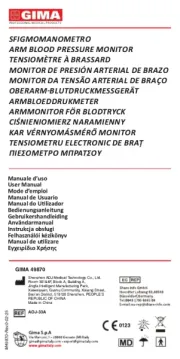
3 Mei 2025
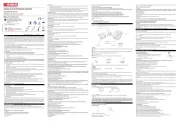
3 Mei 2025

25 Februari 2024

30 Augustus 2023

30 Augustus 2023

30 Augustus 2023
Handleiding Bloeddrukmeter
- Ade
- Lanaform
- Camry
- Medisana
- Hartmann
- A&D
- Create
- Welby
- Proficare
- Homedics
- Welch Allyn
- Laica
- Truelife
- Bintoi
- Archos
Nieuwste handleidingen voor Bloeddrukmeter
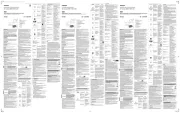
1 September 2025
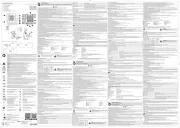
25 Augustus 2025
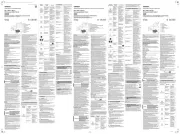
29 Juli 2025
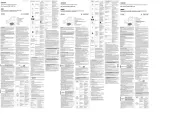
28 Juli 2025
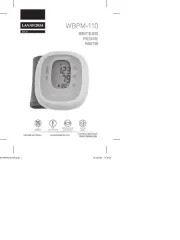
16 Juli 2025
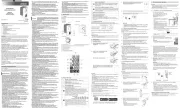
23 Mei 2025
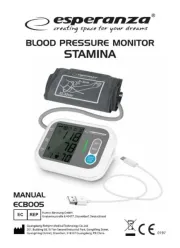
22 Mei 2025
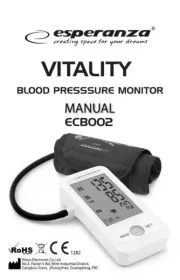
22 Mei 2025
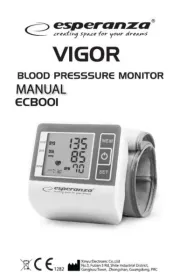
22 Mei 2025
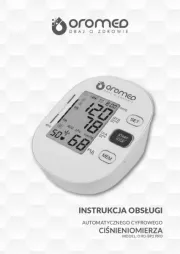
20 Mei 2025